Clay: a natural and surprising nanomaterial
PDF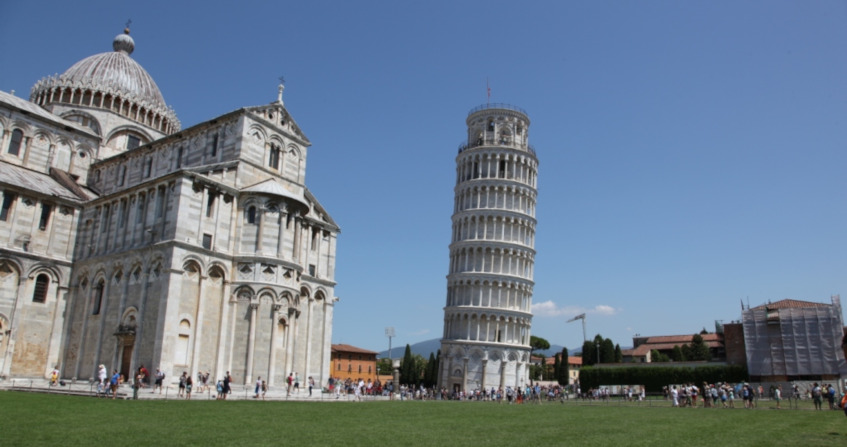
Clays are a family of materials that are omnipresent in our daily lives and in our environment. Dry, they seem as solid as rocks, muddy, they flow like oils. They are now used in the construction of very large structures and often form the subsoil of urban areas. How do civil engineering technicians manage to overcome the difficulties they pose?
1. A universal material
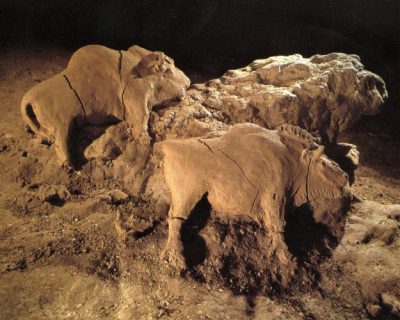
Clay is undoubtedly one of the materials that contributed to the birth of art: the bison in the prehistoric cave of the Tuc d’Audoubert (Ariège) were made from wet clay. Without any firing, the models have been able to keep wet for 15,000 years (Magdalenian period) in the cave discovered by Begouën [2] in 1912. The relative humidity of 100% [3] allowed this conservation (with some cracks) (Figure 1, [4]).
It is also through clay that writing developed in Mesopotamia at the time of Ur and Sumer more than 3000 years BC [5]. The clay tablets, engraved with styli by the scribes in cuneiform writing, are the first written traces of the history of humanity. In particular, the epic of Gilgamesh tells the story of the king of Uruk in 12 clay tablets written more than 2000 years before Christ (Figure 2, Tablet XI, The Flood).

Clay is also a wonderful product that has been used since the dawn of humanity in pharmacopoeia and cosmetics: for example, the body paintings of the Amazonian Indians, beauty masks with clay, such as the green clay of organic shops or the mud baths of spa resorts. More prosaic are the “terre de Sommières” used as a natural stain remover or the basic component of the anti-diarrheal drug “Smecta®”. Clay is also used in toothpaste, in the paper industry, as a filler in paints. Clay is everywhere in our environment and has always been used extensively.
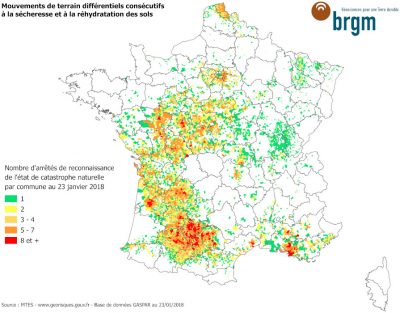
2. A natural nanomaterial
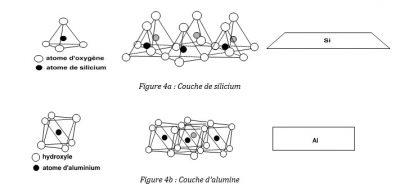
Two or three of these base units form an elementary sheet (Figure 5). Kaolin (used in porcelain) is the stacking of an Si layer and an Al layer while smectites have an Al layer between two Si layers.
Different cation substitutions can also occur, leading to different clay minerals.
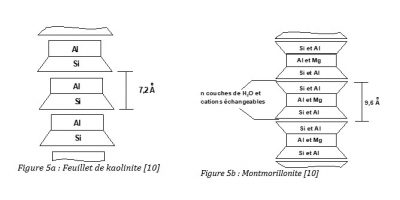
These sheets, of nanometric size (10 Å = 1nm = 10-9m), are stacked to give clay aggregates and the clay structure is either dispersed or flocculated with face-face or edge-face bonds. Stacks can consist of 1 to 100 elementary sheets. On the surface of the sheets and between the sheets, water particles can be adsorbed by electrochemical effect, depending on the nature of the clays. This is particularly the case for smectites where the bonds between sheets are weaker: these electrochemical properties generate the major role of water in the behaviour of clays, particularly shrinkage and swelling: water adsorption leads to a spacing of the sheets and swelling.
This interaction between water and clay finds its source in the specific surface of the clay particles: if we deployed the surface of all the elementary leaves of one gram [9] of montmorillonite, we would obtain 600 m2 (and 50 m2 for a kaolinite) !
The water content of a clay is defined as follows: it is the ratio between the water mass and the clay mass after drying at 105°C. It varies from 0% for a dry powder to values of more than 300 or 500% for montmorillonites. The clay deposits on which Mexico City is built [10] have a water content of more than 300% (varying from 150 to 600%).
Depending on its water content, a clay’s consistency varies, which leads to the definition of “state limits” or Atterberg limits [11] : liquidity limit and plasticity limit. They depend on the mineralogical nature and are used to characterize clays in geotechnical engineering. Above the liquidity limit, clay behaves like a highly viscous liquid (see How matter deforms: fluids and solids) while below the plasticity limit, clay cannot be shaped without cracking. These variations in water content are accompanied by variations in volume.
Natural alluvial soils consist of a mixture of sand, silt and clay particles. The clay content of a soil is defined as the percentage by weight of particles less than 0.002 mm.
3. Clay and permeability
Clay and clay materials are widely used in civil engineering works. One of the most interesting properties of clays is their low permeability, up to one million times lower than that of sands (see Diffusion and percolation in soils)). Waste storage centres use compacted clay layers to provide a seal that isolates deposits from the outside environment. Some products associate a centimetre layer of bentonite [13] with a geomembrane. Another application is for dams and dikes. Large backfill dams (e. g. Serre-Ponçon and Grand’Maison; see Soils for engineer) are made up of different zones and the sealing function is provided by a compacted clay core or a material containing sufficient clay particles. Dykes, small agricultural dams, hillside water reservoirs and other reservoirs are often made of compacted clay earthen embankments.
The storage of nuclear waste is planned in a thick layer of clay in eastern France: it is a highly consolidated clay more than 500 metres deep, whose impermeability will ensure the containment of radioelements [13].
4. Consolidation and settlement
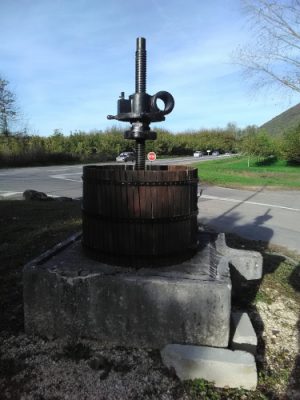
Any surface construction adds additional stress and then causes an additional settling, on the scale of the building constructed, of a backfill or an urban area. An analogy that can be made of this process is that of a fruit press (Figure 6) where the juice is expelled under the effect of the stress applied [14] by the screw acting on the tray.
Due to the low permeability of clays, settlement develops over time ranging from a few days to several centuries. Several examples are famous. Mexico City Cathedral was built in 1560 and covers some of the Aztec temples demolished for its construction. The settlements reach more than 2.5 m with differential settlements [15] of 1.25 m between the West and East towers. Several preservation works have been undertaken, including those of under-excavation: they consist in excavating from wells to create a settlement on the side where the settlement is less (Figure 7)
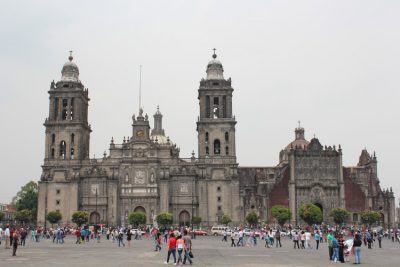
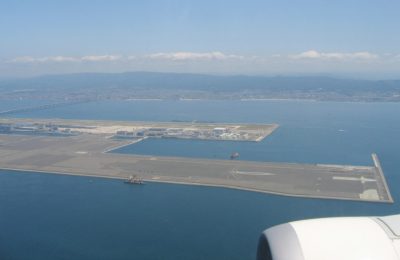
Another cause of subsoil compaction in large metropolitan areas is the lowering of groundwater tables: water needs require pumping into the subsoil. The induced effect is to lower the level of the slicks. The soil layers that were subjected to Archimedes’ thrust are no longer subjected to Archimedes’ thrust and their apparent weight increases. This creates an overload and therefore a settlement developing over the entire area. We then talk about the subsidence of the site. This phenomenon affects Bangkok [18], Shanghai and Venice in particular. This decline is in addition to sea-level rise, making these metropolitan areas vulnerable to flooding.
In geotechnical engineering, the evaluation of construction settlements is an important part of the project: by how much will the building settle and in how long will it be reached?
5. The resistance of clays
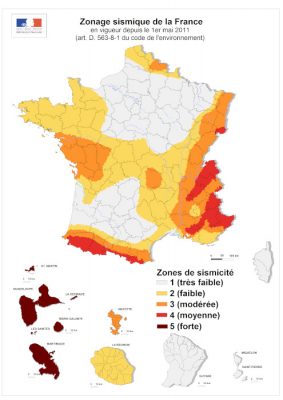
For cities with clayey alluvial layers in their subsoil, earthquakes can have considerable induced effects: we speak of a “site effect” [19]. Seismic waves can be trapped in clay layers and are amplified. An example is the destructive earthquake that struck Mexico City in 1985: although the epicentre of this earthquake is distant, seismic stresses have been amplified in central Mexico City, a city built on clayey deposits with very high water content and low cohesion. The consideration of this phenomenon has been integrated into the seismic zoning of France; the Geneva-Annecy-Grenoble-Valencia Alpine Trench area is in Seismicity Zone 4, the strongest in the metropolitan territory [20] (Figure 9): the presence of significant thicknesses of fine clayey alluvium explains this zoning.
6. Messages to remember
- Clays are found everywhere in nature.
- They are at the crossroads of many sciences and technologies.
- Their properties are derived from their sheet structure.
- Present in the subsoil of alluvial sites, their behaviour generates difficulties for civil engineering structures
Notes and references
Cover image. Leaning Tower of Pisa. [Source: Kiste11 (CC BY-SA 4.0)]
[1] The Holy Bible, 1965; Jerusalem Bible School, Desclée de Brouwer.
[2] Bégouën H. (1912) Les statues d’argile préhistoriques de la caverne du Tuc d’Audoubert (Ariège), Comptes rendus des séances de l’Académie des Inscriptions et Belles-Lettres, Volume 56, Numéro 7, pp. 532-538, http://www.persee.fr/doc/crai_00650536_1912_num_56_7_73103
[3] Relative humidity is the value of the ratio between the water vapour content of the air and its maximum capacity to contain it. It varies from 0% for completely dry air and above 100% water forms into droplets.
[4] Leroi-Gourhan A. (1984) L’Art des cavernes : Atlas des grottes ornées paléolithiques françaises.
[5] Kramer S.N., 2017, L’histoire commence à Sumer, Flammarion.
[6] Gourdier S., Plat E. (2018) Impactdu changement climatique sur la sinistralité due au retrait-gonflement des argiles, Journées Nationales de Géotechnique et de Géologie de l’Ingénieur, ENPC, Marne-la-Vallée, https://hal-brgm.archives-ouvertes.fr/hal-01768395
[7] http://infoterre.brgm.fr/page/alea-retrait-gonflement.
[8] Reiffsteck P., Zerhouni M., Averlan J-L ( 2018), Essais de laboratoire pour la mécanique des sols et la géotechnique, Presses de l’ENPC, Paris.
[9] Un gramme correspond environ la masse contenue dans une petite cuillère d’argile verte.
[10] Ovando E. (2011), Some geotechnical properties to characterize Mexico City Clay, http://geoserver.ing.puc.cl/info/conferences/PanAm2011/panam2011/pdfs/GEO11Paper889.pdf
[11] https://en.wikipedia.org/wiki/Albert_Atterberg
[12] Bentonite is a montmorillonite widely used in civil engineering or petroleum engineering for drilling.
[14] The constraint here is the applied force divided by the section of the press.
[15] Le tassement différentiel est la différence de tassement entre deux fondations d’un bâtiment et entraîne des fissurations.
[16] Burland, J.B., Jamiolkowski, M., Viggiani C. (1998), Stabilizing the leaning tower of Pisa, Bulletin of Engineering Geology and Environnement, n°57 pp.91-99.
[17] Puzrin, A.M., Alonso E.E., Pinyol N.M. (2010), Geomechanics of failures, Springer.
[18] Phien-wej N., Giao P.H., Nutalaya P. (2006), Land subsidence in Bangkok, Thaïland, In Engineering Geology, Volume 82, Issue 4, Pages 187-201, ISSN 0013-7952, https://doi.org/10.1016/j.enggeo.2005.10.004.(http://www.sciencedirect.com/science/article/pii/S0013795205002693
[19] Bard, P.-Y. (2002), Les effets de site et la cuvette grenobloise, Risques-Infos n°13, IRMA Grenoble, Mai 2002
[20] Zonage sismique de la France. http://www.planseisme.fr/Zonage-sismique-de-la-France.html
The Encyclopedia of the Environment by the Association des Encyclopédies de l'Environnement et de l'Énergie (www.a3e.fr), contractually linked to the University of Grenoble Alpes and Grenoble INP, and sponsored by the French Academy of Sciences.
To cite this article: FLAVIGNY Etienne (January 5, 2025), Clay: a natural and surprising nanomaterial, Encyclopedia of the Environment, Accessed April 13, 2025 [online ISSN 2555-0950] url : https://www.encyclopedie-environnement.org/en/soil/clay-a-natural-and-surprising-nanomaterial-2/.
The articles in the Encyclopedia of the Environment are made available under the terms of the Creative Commons BY-NC-SA license, which authorizes reproduction subject to: citing the source, not making commercial use of them, sharing identical initial conditions, reproducing at each reuse or distribution the mention of this Creative Commons BY-NC-SA license.




